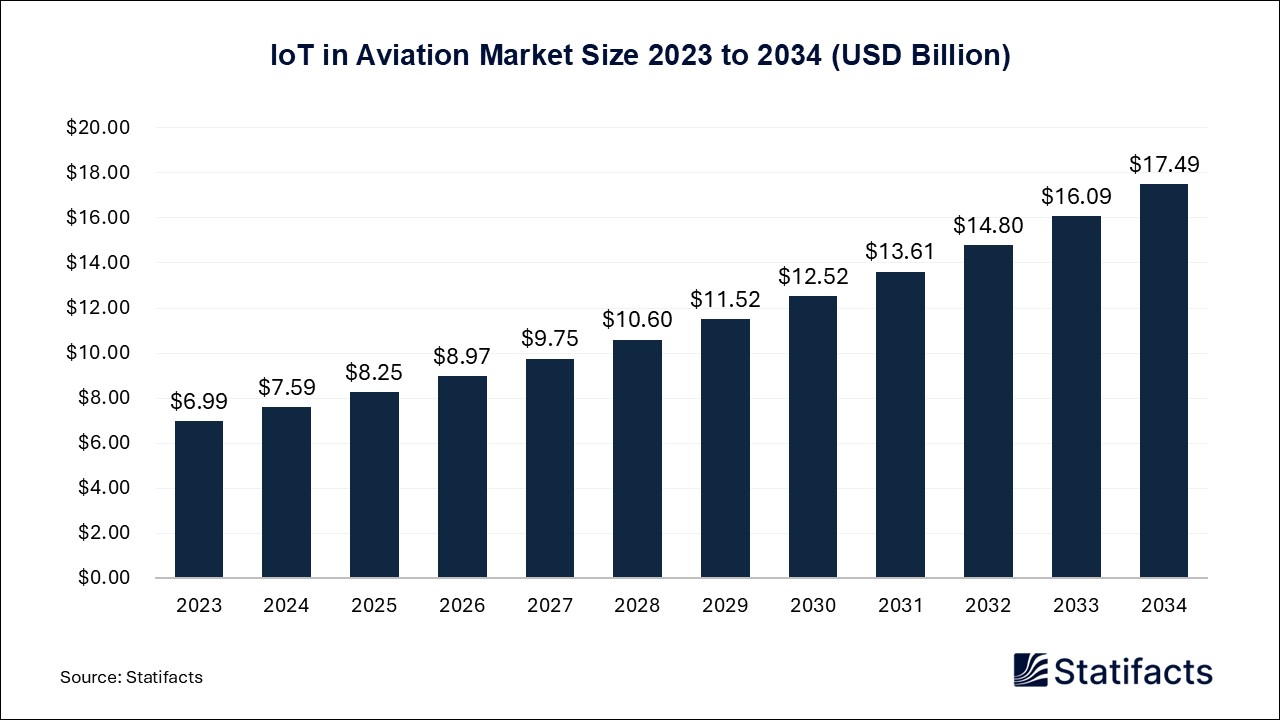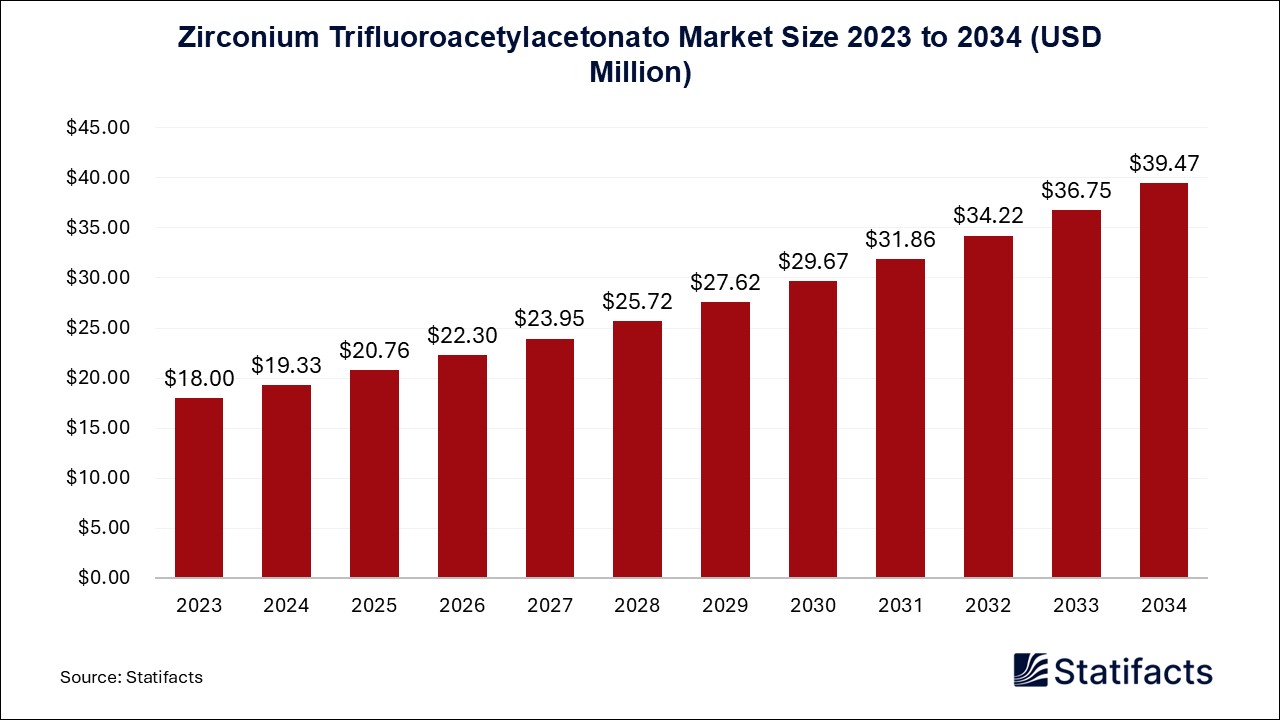Last Updated: 03 Jul 2025
Source: Statifacts
By clicking “Accept All Cookies” you agree to the storing of cookies on your device to enhance site navigation, analyze site usage, and assist in our marketing efforts.
Privacy PolicyThe global carbon dioxide removal market size surpassed USD 838 million in 2024 and is predicted to reach around USD 3,263 million by 2034, registering a CAGR of 14.56% from 2025 to 2034.
| Industry Worth | Details |
| Market Size in 2025 | USD 957 Million |
| Market Size by 2034 | USD 3,263 Million |
| Market Growth Rate from 2025 to 2034 | CAGR of 14.56% |
The carbon dioxide removal (CDR) market is a swiftly growing sector that aims to reduce or remove CO₂ from the atmosphere through natural and engineering solutions. It holds a place in the emission strategies of a global climate system, where emissions cannot be eliminated by ordinary means of mitigation. These include land-based methods, such as afforestation and soil carbon sequestration, as well as ocean-based and engineered methods, including ocean alkalization and direct air capture. The industry consists of products and technologies such as biochar, enhanced mineralization, and BECCS (bioenergy with carbon capture and storage). The market is stimulating growth as new technologies are being developed, governments have put in place incentives, private and public investors have provided funds, awareness has grown, and DAC plants and reforestation initiatives are being developed.
AI accelerates CO2 removal by optimization, reducing cost along with the automation of the process.
“We must rapidly reduce the production of new greenhouse gas emissions worldwide. At the same time, we must also remove and store excess carbon already polluting the atmosphere.”
“Investing in quality carbon removals addresses emissions that can’t be eliminated directly.”
Which region is leading the charge in the Carbon Dioxide Removal Market?
North America
North America dominated the carbon dioxide removal market in 2024. North America remains the carbon dioxide removal (CDR) market leader by virtue of government action, increased investments in the technologies of carbon removal, and policy frameworks that support carbon capture and storage. The presence of significant industry players engaged in developing new CDR avenues and entering into strategic collaborations further enhances the regional market leadership.
Asia-Pacific
Asia Pacific is expected to witness growth at the fastest CAGR due to growing consciousness of a carbon-less environment and drastically increasing activities from both the public and private sectors. The likes of China, India, Japan, and South Korea lie ahead in research and development for sustainable carbon management. Another factor driving market growth in tandem would be investments of chemical and energy companies in carbon-neutral initiatives. Focus of key regional players on innovative carbon solutions, collaborations, and product development further strengthens the prospects of this market in the region.
The market is moderately fragmented with local players like Climeworks, Wakefield BioChar, Cella Mineral Storage Inc., Carbon Engineering Ltd., Global Thermostat, Bussme Energy AB, Carbofex Ltd., Arca, Oregon Biochar Solutions, Novocarbo GmbH, etc., wishing to take the time to edge their presence through investments, partnerships, acquisitions, and mergers. They also invest in product development and competitive pricing. These strategies will promote market growth and lucrative opportunities for market players
Arca Continental's annual revenue for 2024 was Ps. 237,004 million, an increase of 10.9% (8.8% on a currency-neutral basis) compared to the previous year.
Published by Saurabh Bidwai
Last Updated: 03 Jul 2025
Source: Statifacts
Last Updated: 03 Jul 2025
Source: Statifacts
| Subsegment | 2024 | 2025 | 2026 | 2027 | 2028 | 2029 | 2030 | 2031 | 2032 | 2033 | 2034 |
|---|---|---|---|---|---|---|---|---|---|---|---|
| Biochar | 274.63 | 314.99 | 361.70 | 415.79 | 478.52 | 551.35 | 635.99 | 734.48 | 849.22 | 983.04 | 1,104.14 |
| Direct Air Capture (DAC) | 260.11 | 298.39 | 342.68 | 394.00 | 453.52 | 522.65 | 603.01 | 696.56 | 805.58 | 932.77 | 1,047.85 |
| Enhanced/Carbon Mineralization | 114.93 | 131.45 | 150.51 | 172.54 | 198.01 | 227.52 | 261.72 | 301.43 | 347.57 | 401.25 | 449.90 |
| Ocean Alkalinization | 49.58 | 56.42 | 64.26 | 73.28 | 83.66 | 95.61 | 109.40 | 125.32 | 143.72 | 165.02 | 184.38 |
| BECCS | 88.78 | 101.51 | 116.21 | 133.18 | 152.81 | 175.53 | 201.87 | 232.44 | 267.95 | 309.26 | 346.71 |
| Microalgae | 49.52 | 54.65 | 60.32 | 66.57 | 73.45 | 81.01 | 89.33 | 98.44 | 108.42 | 119.32 | 129.60 |
Last Updated: 03 Jul 2025
Source: Statifacts
| Subsegment | 2024 | 2025 | 2026 | 2027 | 2028 | 2029 | 2030 | 2031 | 2032 | 2033 | 2034 |
|---|---|---|---|---|---|---|---|---|---|---|---|
| Biochar | 274.63 | 314.99 | 361.70 | 415.79 | 478.52 | 551.35 | 635.99 | 734.48 | 849.22 | 983.04 | 1,104.14 |
| Direct Air Capture (DAC) | 260.11 | 298.39 | 342.68 | 394 | 453.52 | 522.65 | 603.01 | 696.56 | 805.58 | 932.77 | 1,047.85 |
| Enhanced/Carbon Mineralization | 114.93 | 131.45 | 150.51 | 172.54 | 198.01 | 227.52 | 261.72 | 301.43 | 347.57 | 401.25 | 449.90 |
| Ocean Alkalinization | 49.58 | 56.42 | 64.26 | 73.28 | 83.66 | 95.61 | 109.40 | 125.32 | 143.72 | 165.02 | 184.38 |
| BECCS | 88.78 | 101.51 | 116.21 | 133.18 | 152.81 | 175.53 | 201.87 | 232.44 | 267.95 | 309.26 | 346.71 |
| Microalgae | 49.52 | 54.65 | 60.32 | 66.57 | 73.45 | 81.01 | 89.33 | 98.44 | 108.42 | 119.32 | 129.60 |
CDR refers to technologies and methods that actively remove CO₂ from the atmosphere and store it long-term, helping to mitigate climate change. Techniques include direct air capture, bioenergy with carbon capture, afforestation, and ocean-based solutions.
The market is growing due to global decarbonization goals, net-zero commitments by governments and corporations, supportive climate policies, and increased investment in climate tech and carbon offset strategies.
Key methods include direct air capture (DAC), carbon mineralization, reforestation, biochar, soil carbon sequestration, and ocean-based carbon capture. DAC is gaining traction for its scalability and precision.
Challenges include high operational costs, limited scalability of some technologies, lack of standardization in carbon accounting, and uncertainties in long-term storage and verification of captured CO₂.
Leading players include Climeworks, Carbon Engineering, Heirloom, Charm Industrial, and Global Thermostat, along with startups and research groups developing nature-based and tech-based solutions.
To get full access to our Market Insights, you need a Professional Account or a Business Suite.

You will receive an email from our Business Development Manager. Please be sure to check your SPAM/JUNK folder too.

You will receive an email from our Business Development Manager. Please be sure to check your SPAM/JUNK folder too.

Our customers work more efficiently and benefit from



